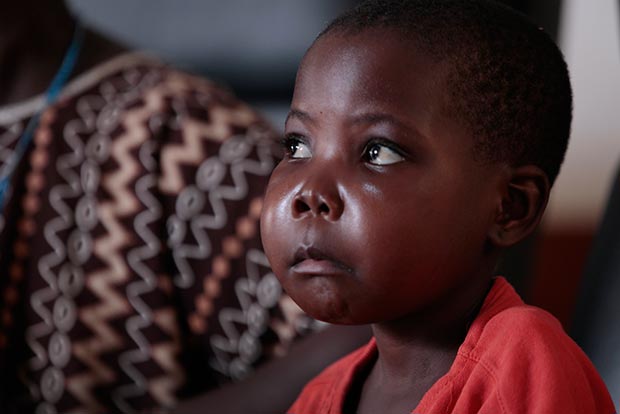Burkitt’s lymphoma is a rare but highly aggressive form of non-Hodgkin lymphoma primarily affecting B-cells, which are crucial components of the immune system. Named after Dr. Denis Burkitt, who first identified the disease in equatorial Africa, Burkitt’s lymphoma is distinguished by its rapid growth and distinct epidemiological patterns. This article provides a detailed exploration of the disease, including its causes, symptoms, diagnosis, and current treatment modalities.

Types of Burkitt’s Lymphoma
- Endemic Burkitt’s Lymphoma: Prevalent in equatorial Africa, closely linked to Epstein-Barr Virus (EBV) infection and primarily affects children.
- Sporadic Burkitt’s Lymphoma: Found worldwide, especially in developed countries, affecting both children and adults.
- Immunodeficiency-Associated Burkitt’s Lymphoma: Typically occurs in individuals with compromised immune systems, such as HIV/AIDS patients or organ transplant recipients.
Causes and Risk Factors
Genetic Abnormalities
Burkitt’s lymphoma is characterized by a translocation involving the MYC gene on chromosome 8, most commonly t(8;14). This genetic alteration leads to uncontrolled cell proliferation.
Epstein-Barr Virus (EBV)
EBV infection is a significant contributing factor, particularly in endemic cases. The virus influences the development of lymphomas by integrating into the host’s genome and triggering oncogenic processes.
Other Risk Factors
- Weakened Immune System: Immunodeficiency due to HIV/AIDS or organ transplantation.
- Malaria: Chronic malaria infections weaken the immune system, increasing EBV-related lymphoma risk.
- Age and Gender: Most prevalent in males under the age of 40.
Symptoms and Clinical Presentation
Common Symptoms
- Rapidly Growing Tumors: Frequently in the jaw or abdominal region.
- Swelling and Pain: Around affected lymph nodes or organs.
- B Symptoms: Fever, night sweats, and unexplained weight loss.
- Digestive Issues: Nausea, vomiting, or intestinal obstruction in abdominal cases.
Advanced Symptoms
- Neurological complications if the central nervous system (CNS) is involved.
- Severe anemia or infections due to bone marrow involvement.
Diagnosis
Accurate and timely diagnosis is critical due to the aggressive nature of Burkitt’s lymphoma.
Diagnostic Tools
- Biopsy: Excisional biopsy of the affected lymph node or tumor for histopathological examination.
- Immunophenotyping: To confirm B-cell origin and MYC overexpression.
- Cytogenetics: Fluorescence in situ hybridization (FISH) or karyotyping to detect MYC translocations.
- Imaging: CT, PET, or MRI scans to assess disease extent and organ involvement.
- Laboratory Tests:
- Complete blood count (CBC)
- Lactate dehydrogenase (LDH) levels
- Bone marrow aspiration for staging
Treatment Options
Chemotherapy
First-line Therapy: Combination regimens such as CODOX-M/IVAC or Hyper-CVAD are highly effective.
Immunotherapy
Rituximab, a monoclonal antibody targeting CD20 on B-cells, enhances chemotherapy effectiveness and improves outcomes.
Supportive Care
- Antimicrobial Prophylaxis: Prevents infections in immunocompromised patients.
- Growth Factor Support: To mitigate chemotherapy-induced neutropenia.
Treatment in Resource-Limited Settings
Simplified regimens, such as CHOP, are used when advanced therapies are unavailable.
Prognosis
Prognosis varies based on disease stage, patient age, and access to timely treatment. With aggressive chemotherapy, the 5-year survival rate can exceed 90% for early-stage cases. However, delayed diagnosis or relapse significantly worsens outcomes.
Current Research and Advances
Novel Therapies
- CAR T-Cell Therapy: Genetic modification of T-cells to target MYC-expressing cells shows promise.
- Small Molecule Inhibitors: Targeting MYC and associated pathways.
Epidemiological Studies
Ongoing research focuses on the interplay between EBV, malaria, and Burkitt’s lymphoma in endemic regions.
Advances in Diagnostics
Liquid biopsy and next-generation sequencing (NGS) enable earlier detection and personalized treatment approaches.
Understanding Burkitt’s Lymphoma Progression
Burkitt’s lymphoma, though rare, demands immediate attention due to its aggressive progression. Advances in diagnostics, chemotherapy, and immunotherapy have significantly improved outcomes. Continued research is essential to enhance our understanding and develop novel, accessible treatments for this life-threatening condition.

